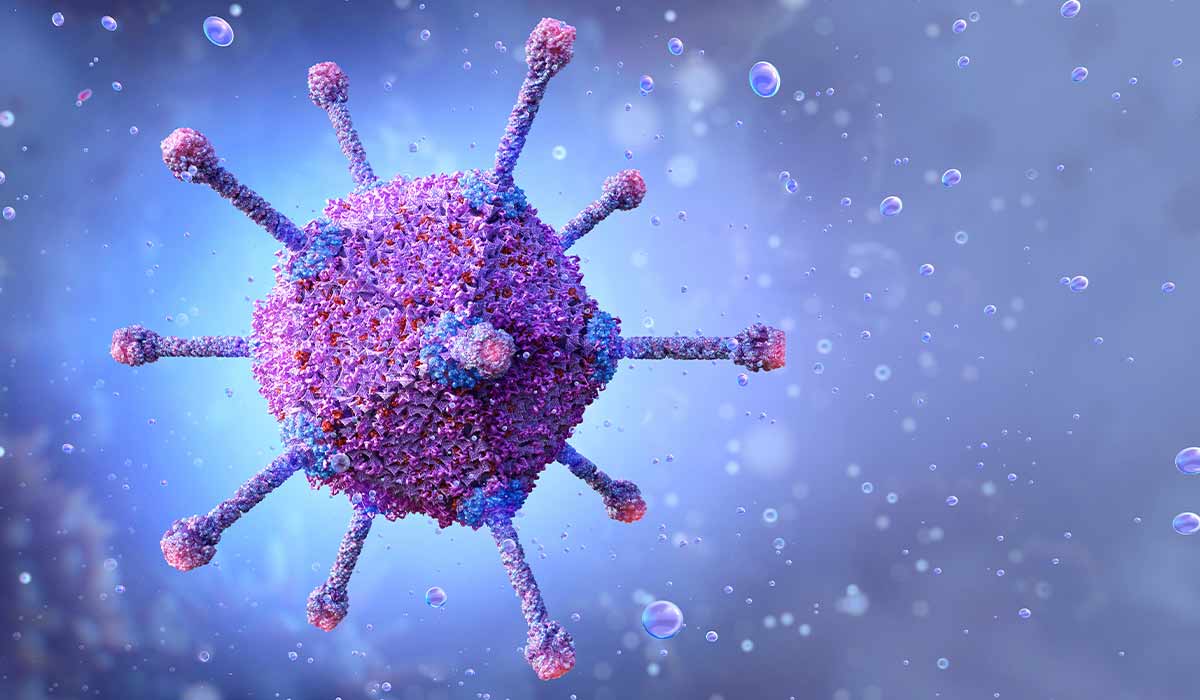Myocarditis is a disease that reduces the ability of the heart to pump blood. It can cause chest pain, shortness of breath, and rapid or irregular heart rhythms.
Myocarditis is a different disease than a heart attack. It develops in people who have previously suffered from influenza or another viral infection. It often affects those trying to “get over” the flu. When inflammation develops in the heart muscle, serious heart rhythm disturbances and severe circulatory failure occur, which may cause death.
Myocarditis affects the entire muscle, while an infarction is the necrosis of a fragment of the heart muscle due to the closure of the lumen of a blood vessel by an atherosclerotic plaque or a thrombus. These structures form in the lumen of the vessel in people with high cholesterol, hypertension, and cigarette smokers.
Therefore, these conditions differ in the factors that cause them and the extent of the disease process.
Myocarditis![]() is more common in immunocompromised people. People with comorbidities that affect the functioning of the immune system are particularly at risk of developing this disease. It rarely occurs in children.
is more common in immunocompromised people. People with comorbidities that affect the functioning of the immune system are particularly at risk of developing this disease. It rarely occurs in children.
Myocarditis can have different varieties. The most famous ones are:

Myocarditis is caused by infectious, autoimmune, toxic, and physical factors. That is why the causes of myocarditis may be different for every patient. However, detecting an apparent cause of the disease is often impossible. In most patients, it is most likely caused by a virus. Myocarditis usually develops during or after a throat infection or respiratory tract. A gastrointestinal infection with diarrhea or an infection with a skin rash may also precede the condition. Sometimes, the viral infection disappears, and myocarditis persists due to an excessive immune response.
To understand how myocarditis occurs, it is worth recalling from biology lessons the structure of the heart![]() , which consists of several layers. The innermost one is the endocardium, a thin and smooth tissue that forms the lining of the ventricles and valves. From the outside, they are surrounded by the pericardium – a double membrane that protects them from friction during activity. Viral inflammation may affect any of these layers, often directly affecting the heart muscle.
, which consists of several layers. The innermost one is the endocardium, a thin and smooth tissue that forms the lining of the ventricles and valves. From the outside, they are surrounded by the pericardium – a double membrane that protects them from friction during activity. Viral inflammation may affect any of these layers, often directly affecting the heart muscle.
When the viruses reach the epithelium of the nose or throat's respiratory tract, they multiply there intensively. In the first few hours, they damage the cilia on the mucous membrane, which weakens the body's first line of defense, and then they migrate further – to the bronchi, bronchioles, and lungs.
Sometimes, they also reach the heart, causing inflammation there. But this mechanism may also be different: the immune system reaction accompanying the infection may also be responsible for this complication development. Due to this, an inflammatory process begins in the heart muscle, which damages cells, reducing the heart muscle contractility.
Infectious agents![]() include:
include:
Myocarditis may also happen due to an exposition to toxic factors![]() , e.g.:
, e.g.:
Other damaging factors such as radiation, certain drugs![]() , e.g., c*******e, antibiotics, sulfonamides, some anticonvulsants, drugs, e.g., cocaine, other chemicals, and poisons can also cause a hypersensitivity reaction with involvement of the heart muscle (so-called myocarditis due to hypersensitivity). Severe myocarditis may occur during the treatment of cancer with checkpoint inhibitors. In young people, often with a family history of cardiomyopathy/sudden deaths in the family, myocarditis may be the first symptom of a rare form of cardiomyopathy
, e.g., c*******e, antibiotics, sulfonamides, some anticonvulsants, drugs, e.g., cocaine, other chemicals, and poisons can also cause a hypersensitivity reaction with involvement of the heart muscle (so-called myocarditis due to hypersensitivity). Severe myocarditis may occur during the treatment of cancer with checkpoint inhibitors. In young people, often with a family history of cardiomyopathy/sudden deaths in the family, myocarditis may be the first symptom of a rare form of cardiomyopathy![]() .
.
The cause may also be immunological factors![]() like:
like:
Myocarditis can occur in anyone. The incidence is unknown because there are no reliable criteria for diagnosing myocarditis if only non-invasive diagnostic tests are performed. Myocarditis does not run in families. It occurs more often in people with impaired immunity.
Symptoms of myocarditis![]() are diverse and non-specific—most patients with acute or fulminant inflammation report a recent viral infection before falling ill. Prodromal symptoms, i.e., preceding myocarditis, depend on the type of infection (upper respiratory tract or gastrointestinal tract) and precede cardiac symptoms by several days or weeks.
are diverse and non-specific—most patients with acute or fulminant inflammation report a recent viral infection before falling ill. Prodromal symptoms, i.e., preceding myocarditis, depend on the type of infection (upper respiratory tract or gastrointestinal tract) and precede cardiac symptoms by several days or weeks.
Symptoms of myocarditis depend on the cause of the disease, the severity of myocardial involvement, and the co-occurrence of infection. Common symptoms include:
In mild myocarditis, symptoms may not occur.

Contact your doctor if you experience chest pain, shortness of breath, irregular or rapid heartbeat, or swelling. If your chest pain is severe or you are short of breath at rest, call an ambulance. Your family doctor may refer you to a specialist (cardiologist or infectious diseases doctor).
If myocarditis is suspected, one or more diagnostic tests may be recommended depending on the severity of symptoms. The most significant abnormalities in diagnostic tests help to establish the diagnosis:
Echocardiogram![]() is one of the most helpful tests of the heart muscle. It uses ultrasound, i.e., sound waves with a higher frequency than we can hear, which, reflecting from various body structures, can be caught after returning and processed into the image of specific organs or their parts. This test is used to assess the functioning of the heart muscle and valves, detect their diseases, and evaluate the effects of heart treatment after surgery. In the diagnosis of infective endocarditis, a transthoracic echocardiogram is performed – the most common examination method.
is one of the most helpful tests of the heart muscle. It uses ultrasound, i.e., sound waves with a higher frequency than we can hear, which, reflecting from various body structures, can be caught after returning and processed into the image of specific organs or their parts. This test is used to assess the functioning of the heart muscle and valves, detect their diseases, and evaluate the effects of heart treatment after surgery. In the diagnosis of infective endocarditis, a transthoracic echocardiogram is performed – the most common examination method.
The patient lies on the couch on his left side. The doctor places the echocardiograph head on the subject's chest. It must be covered with a small amount of gel, facilitating heart imaging. This examination allows you to observe the structure of the heart valves and the possible presence of pathological changes in the heart.
The chest X-ray![]() shows the advancement of circulatory failure, heart enlargement, and pulmonary circulation congestion.
shows the advancement of circulatory failure, heart enlargement, and pulmonary circulation congestion.
MRI![]() (magnetic resonance imaging) can show the exact location of the heart muscle damage and help perform a biopsy. Endomyocardial biopsy
(magnetic resonance imaging) can show the exact location of the heart muscle damage and help perform a biopsy. Endomyocardial biopsy![]() is most often performed in people with a severe course of the disease: significant heart failure and severe heart rhythm disturbances. A small amount of material (a fragment of the heart muscle) is removed during cardiac catheterization. Using a biopsy, we can directly detect inflammatory infiltration and cardiomyocyte damage. However, it should be remembered that a negative biopsy result does not exclude myocarditis.
is most often performed in people with a severe course of the disease: significant heart failure and severe heart rhythm disturbances. A small amount of material (a fragment of the heart muscle) is removed during cardiac catheterization. Using a biopsy, we can directly detect inflammatory infiltration and cardiomyocyte damage. However, it should be remembered that a negative biopsy result does not exclude myocarditis.
Specialists advise all patients suffering from myocarditis to:
Further treatment![]() depends on the symptoms accompanying myocarditis. Common cardiac arrhythmias are treated with antiarrhythmic agents. In some cases, electrical stimulation of the heart is indicated.
depends on the symptoms accompanying myocarditis. Common cardiac arrhythmias are treated with antiarrhythmic agents. In some cases, electrical stimulation of the heart is indicated.
This disease often leads to heart failure, especially the fulminant form of myocarditis. Equipment is then used to support or temporarily replace heart functions. Patients may require quick transport to a high-reference center, as the mentioned tools are not part of the fundamental equipment of smaller hospitals. If treatment is ineffective and severe heart failure develops, the patient may require a heart transplant.
Myocarditis can also be treated causally after its etiology is diagnosed or suspected. Bacterial infection is treated with appropriate antibiotics, and viral infection with antiviral drugs.
Myocarditis is a disease whose course is diverse. If you have severe heart failure, you may need to be treated in an intensive care unit. For a mild disease, outpatient treatment without hospitalization is possible.

Most patients do not experience any complications. Symptoms of myocarditis disappear after a few days or weeks, and the patient recovers. However, some infection types can cause severe or persistent inflammation and complications. Sometimes, myocarditis can lead to damage to the heart muscle (and impaired heart function), requiring long-term treatment.
In the case of myocarditis in autoimmune diseases, a cross-immune reaction also occurs, and antibodies circulating in the blood react with heart muscle cells, causing an inflammatory reaction.
A risk factor may be weakening the body's immunity. People who are more at risk of developing myocarditis are people with autoimmune diseases, such as:
The symptoms of the disease may disappear quickly, but this does not mean that the inflammatory process in the heart has healed. The prognosis for myocarditis is difficult to predict, and they can be better determined by observing the patient for a more extended period. Therefore, the doctor will order follow-up visits, ECG and echocardiography tests, and sometimes magnetic resonance heart imaging. Rest and reducing workload is an essential aspect of recovery. Avoid excessive physical exercise for several months (competitive sports for six months after illness).
If dilated cardiomyopathy develops, returning to pre-disease activity is unlikely. Anticoagulants and drugs must be used to improve the circulatory system's efficiency. In the case of a significant decrease in the left ventricular ejection fraction (the ratio of the volume of blood pumped into the aorta during one systole to the volume of the left ventricle in diastole), the treatment will be mechanical circulatory support or heart transplantation.
If the complication of dilated cardiomyopathy does not occur, the prognosis of patients![]() with myocarditis is usually good. The basis of action after an incident is to limit physical activity by the doctor's recommendations. In terms of prevention, vaccinations are of the grandest importance, especially against viral diseases: measles, mumps, rubella, and influenza.
with myocarditis is usually good. The basis of action after an incident is to limit physical activity by the doctor's recommendations. In terms of prevention, vaccinations are of the grandest importance, especially against viral diseases: measles, mumps, rubella, and influenza.
Ask your doctor when you can resume normal life activities.
To prevent myocarditis![]() , do not ignore infections or flu. Any untreated and ongoing disease may contribute to the development of myocarditis.
, do not ignore infections or flu. Any untreated and ongoing disease may contribute to the development of myocarditis.
It is also worth not taking cold or flu medications for a long time because they can also burden the heart. Vaccination is a good protection against flu complications. Flu vaccinations can protect us against the development of the disease and its possible effects.
In addition, follow hygiene rules and wash hands thoroughly to reduce the risk of developing viral infections. Myocarditis can be avoided by limiting contact with people infected with flu-like viruses until they recover. Also, if you are sick, e.g., with the flu, avoid contact with others to avoid spreading viruses.
It is also worth taking care of a diet that includes healthy fats of plant origin (including vegetable oils and avocado) and fatty seafood rich in Omega acids, nuts, and dried fruit. These types of products strengthen the heart. Choose mainly vegetables and fruits with a lot of potassium, including bananas or tomatoes.
Table of Contents

Epstein Barr Virus is a pathogen that causes infectious mononucleosis and many other diseases. Learn about the risks associated with… read more »

Adenovirus is a pathogen commonly found in the environment. Find out how to recognise adenoviral infections. Learn about treatment and… read more »

A viral infection occurs when a virus invades the body and begins to multiply. Viruses are tiny infectious agents that… read more »

Anaplasmosis is a systemic infectious disease transmitted by ticks. It can be as dangerous as Lyme disease. Read the article… read more »

Chest pain refers to any discomfort, pressure, tightness, or pain that occurs in the chest area. It can vary in… read more »

Trichinosis or trichinellosis is caused by a parasite roundworm from the sort of Trichinella. Undercooked pork and wild creatures eaten… read more »

Viruses are microscopic infectious agents that can only replicate inside the living cells of a host organism. They are not… read more »

Do you know what the symptoms of Lyme disease are? The sooner you get diagnosed the better. Learn all about… read more »

Meningitis is a dangerous infectious disease most often caused by viruses or bacteria. It is an inflammatory condition that requires… read more »